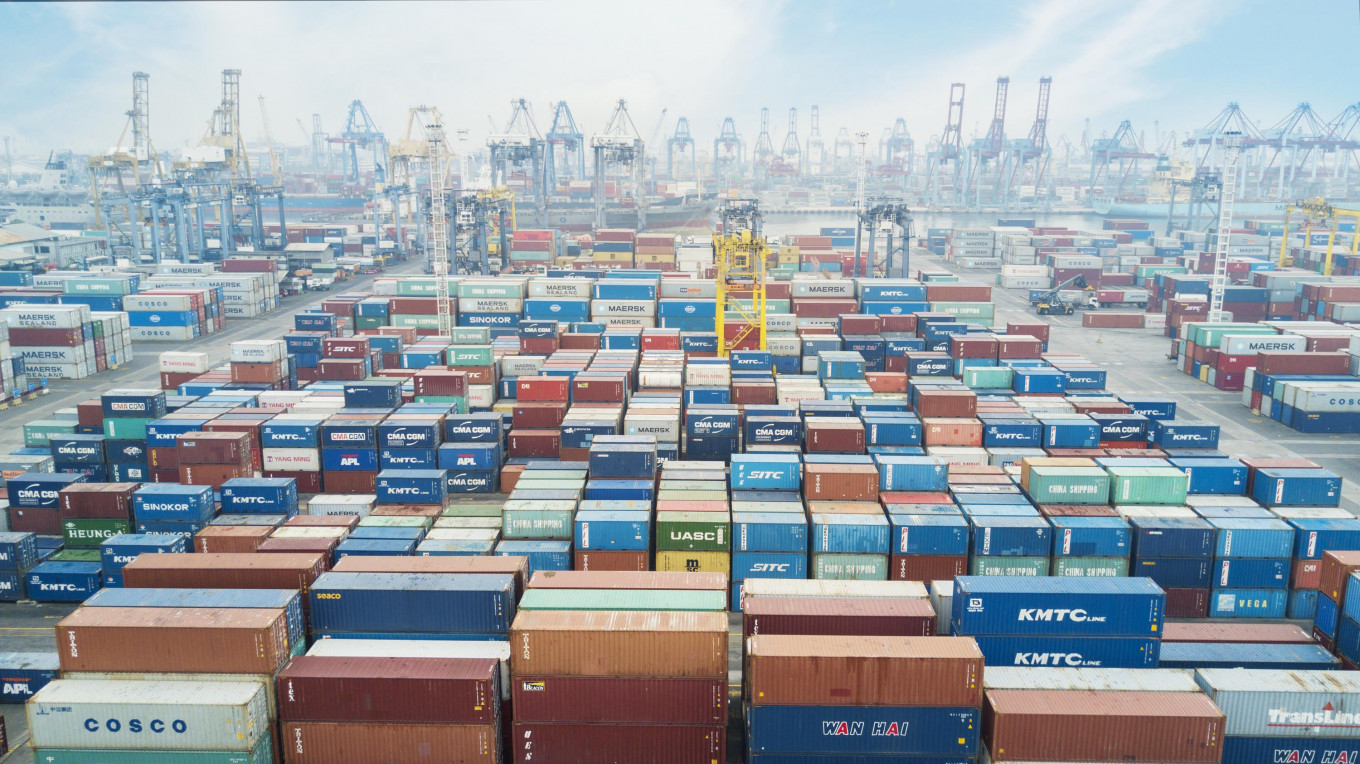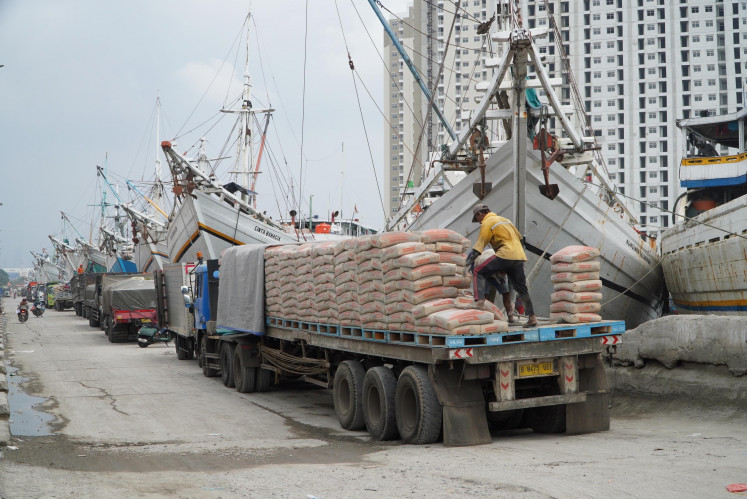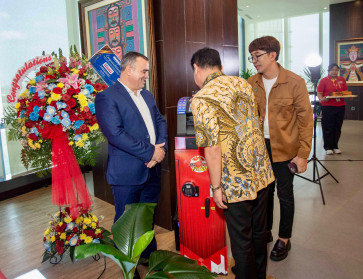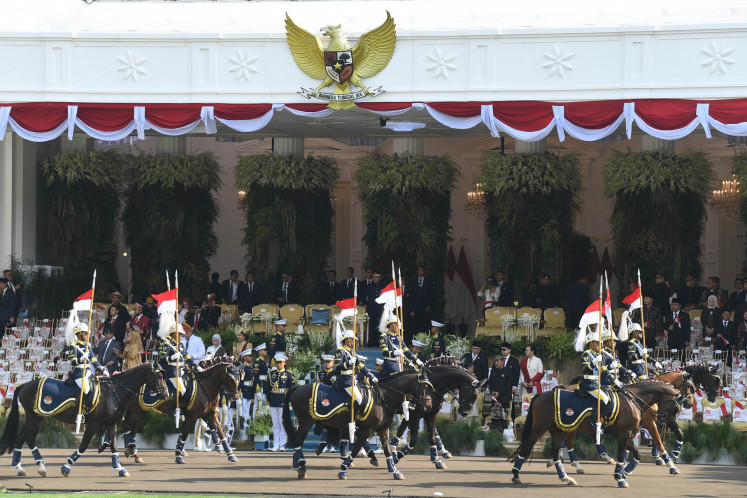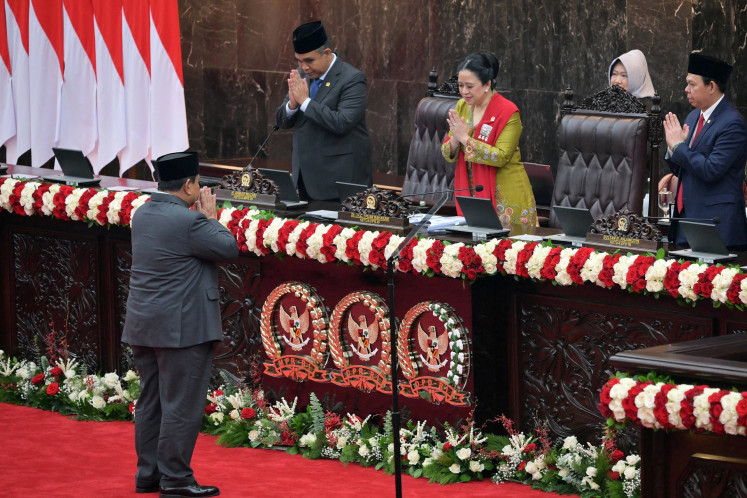Popular Reads
Top Results
Can't find what you're looking for?
View all search resultsPopular Reads
Top Results
Can't find what you're looking for?
View all search resultsE-commerce platforms help solve RI’s logistical and infrastructure inefficiencies
Change text size
Gift Premium Articles
to Anyone
O
ne of the most-cited problems in conducting business in Indonesia is the high cost of logistics, which in turn increases the prices of goods, due to a lack of proper infrastructure, especially seaports.
A report by The Jakarta Post revealed that Indonesia ranked 46th out of 160 countries surveyed for the World Bank’s 2018 Logistics Performance Index (LPI). It lagged behind neighboring middle-income countries Thailand (32nd), Vietnam (39th) and Malaysia (41st), despite rising 17 places on the list compared to previous year’s survey.
The same article went further to say that Indonesia’s logistics costs currently stood at 23.5 percent of the country’s gross domestic product (GDP), the highest among Southeast Asian nations, according to the World Bank.
According to Nailul Huda, an economist with the Institute for Development of Economics and Finance’s (Indef) Center of Innovation and the Digital Economy, the high cost of logistics is mainly due to poor infrastructure, especially at seaports, which have resulted in cost inefficiencies for distributors who dock their ships in local ports.
As a result of this inefficient distribution infrastructure, prices of locally sourced commodities, such as fruit, can be more expensive than those imported from overseas, especially once these commodities are sold in places outside Jakarta, according to Nailul.
He went on further to say that, in his first term, President Joko “Jokowi” Widodo had significantly increased state budget spending to boost infrastructure development across Indonesia.
While some great improvements in terms of road infrastructure could already be seen from such development, work still needed to be done to improve Indonesia’s infrastructure, especially in maritime transportation, he continued.
This year, for instance, the government announced a plans to implement its National Logistics Ecosystem platform, seeking to cut red tape and reduce high logistics costs, bringing them down to just 17 percent of GDP.
By doing this, Indonesia would not only increase its business competitiveness; it would also boost the efficiency of goods’ distribution, thus addressing the price inequality across Indonesia, according to Finance Minister Sri Mulyani Indrawati.
Lately, e-commerce platforms have supported Indonesia’s efforts toward more efficient logistics. First of all, these platforms contribute to boosting the national logistics business, as it depends heavily on the sector to deliver the goods they sell online, according to Nailul.
“Come to think of it, the transportation sector also gets a boon from the e-commerce industry, which has stimulated the emergence of many new logistics agents in Indonesia, as well as attracting many foreign logistics companies to expand their businesses in Indonesia,” Nailul told the Post over the phone on Oct. 15.
A 2019 survey by Jones Lang LaSalle Indonesia quoted by kompas.com, for instance, revealed that an Australian logistics company called Logos would expand its presence in Indonesia by opening new warehouses in Jakarta and its satellite cities with a total space of 870,000 square meters by 2021.
“This increase has also been spurred by high demand from Indonesia’s big population, along with the rapid consumption pattern, which has happened especially during the COVID-19 pandemic when people have largely preferred to shop online,” Nailul said.
He also said that these platforms had contributed to the improvement of the local logistics sector through their innovation.
For instance, Tokopedia has recently expanded its fulfillment centers (locally known as Toko Cabang), now covering not only Jakarta, but also Bandung in West Java, Surabaya in East Java, Makassar in South Sulawesi and Palembang in South Sumatra, and soon the e-commerce platform will open a new one in Medan in North Sumatra.
The fulfillment centers seek to cut distribution costs of goods sold by Indonesian merchants, thus bringing overall operational costs down by making it efficient by basically addressing distribution inefficiencies that contribute to inflation in the country.
Therefore, merchants can expand their businesses and tap into new markets, selling more products to more customers, by simply consigning their goods to the fulfillment centers. The Tokopedia team will take care of the delivery and shipping process. By opening these distribution centers in areas outside Jakarta, which might not have sound channels yet, Tokopedia has boosted transportation efficiency of these goods.
“We know that connectivity among regions in Indonesia – a nation with 17,000 islands that lay scattered across the archipelago – also pose an obstacle to the logistics aspects of doing business. We have a vision that everyone has the same economic access and opportunity, whether they live in the city or a small village,” Tokopedia associate vice president of fulfillment Erwin Dwi Saputra said.
In this vein, the Tokopedia fulfillment centers have helped fast-moving consumer goods brand Procter & Gamble Indonesia (P&G Indonesia) cut its distribution costs to deliver products across Indonesia.
“Previously, we had to take care of the delivery to consumers across all parts of Indonesia, straight from our factory in Karawang, West Java,” said Leo Chandra, head of sales of PT Borwita Indah, which manages P&G Indonesia.
Now, each of the Tokopedia fulfillment centers takes care of the delivery process through its network of local delivery services, helping the company reduce its logistics costs dramatically; the sums the company has to pay Tokopedia in return for these services is much lower than the distribution costs it previously incurred when handling shipments by itself, according to Leo.
Erwin continued that setting up the fulfillment centers across Indonesia also sought to fill the supply problems caused by the connectivity gap, which also contribute to price inflation.
Furthermore, the fulfillment centers arm themselves with analytics that help sellers get real-time information on the availability of their goods, as well as the regions that have high demand of their products. This insight on product sales performance gives sellers a clue as to which areas they need to concentrate on with selling their products.
Now, as Indonesian logistics infrastructure begins to improve bit by bit, the next task for the government is to make sure that the national seaports system gets better.
Waiting in line: Ships are moored at North Jakarta’s Sunda Kelapa Port to have products unloaded. Inefficiencies in Indonesia’s port queuing systems leave domestic and international shipping firms with no choice but to pay expensive docking fees due to long dwell times, which are weighing on Indonesia’s international business competitiveness. (JP/Arief Suhardiman)“For instance, the long waiting time at Indonesian ports further increases logistics costs, because not only do these ships waste a lot of fuel as they queue at local ports, they have to pay for docking there for four to five days,” Nailul said, adding that the government’s vision of bringing the dwell time down to just 1.5 days, in keeping with the normal time taken in other countries, could boost Indonesia’s regional business competitiveness.

